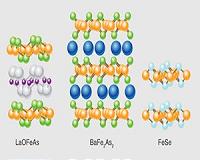 |
MIT News Office Boston MA (SPX) May 06, 2011 A team of researchers at MIT has found a way to manipulate both the thermal conductivity and the electrical conductivity of materials simply by changing the external conditions, such as the surrounding temperature. And the technique they found can change electrical conductivity by factors of well over 100, and heat conductivity by more than threefold. "It's a new way of changing and controlling the properties" of materials - in this case a class called percolated composite materials - by controlling their temperature, says Gang Chen, MIT's Carl Richard Soderberg Professor of Power Engineering and director of the Pappalardo Micro and Nano Engineering Laboratories. Chen is the senior author of a paper describing the process that was published online on April 19 and will appear in a forthcoming issue of Nature Communications. The paper's lead authors are former MIT visiting scholars Ruiting Zheng of Beijing Normal University and Jinwei Gao of South China Normal University, along with current MIT graduate student Jianjian Wang. The research was partly supported by grants from the National Science Foundation. The system Chen and his colleagues developed could be applied to many different materials for either thermal or electrical applications. The finding is so novel, Chen says, that the researchers hope some of their peers will respond with an immediate, "I have a use for that!" One potential use of the new system, Chen explains, is for a fuse to protect electronic circuitry. In that application, the material would conduct electricity with little resistance under normal, room-temperature conditions. But if the circuit begins to heat up, that heat would increase the material's resistance, until at some threshold temperature it essentially blocks the flow, acting like a blown fuse. But then, instead of needing to be reset, as the circuit cools down the resistance decreases and the circuit automatically resumes its function. Another possible application is for storing heat, such as from a solar thermal collector system, later using it to heat water or homes or to generate electricity. The system's much-improved thermal conductivity in the solid state helps it transfer heat. Essentially, what the researchers did was suspend tiny flakes of one material in a liquid that, like water, forms crystals as it solidifies. For their initial experiments, they used flakes of graphite suspended in liquid hexadecane, but they showed the generality of their process by demonstrating the control of conductivity in other combinations of materials as well. The liquid used in this research has a melting point close to room temperature - advantageous for operations near ambient conditions - but the principle should be applicable for high-temperature use as well. The process works because when the liquid freezes, the pressure of its forming crystal structure pushes the floating particles into closer contact, increasing their electrical and thermal conductance. When it melts, that pressure is relieved and the conductivity goes down. In their experiments, the researchers used a suspension that contained just 0.2 percent graphite flakes by volume. Such suspensions are remarkably stable: Particles remain suspended indefinitely in the liquid, as was shown by examining a container of the mixture three months after mixing. By selecting different fluids and different materials suspended within that liquid, the critical temperature at which the change takes place can be adjusted at will, Chen says. "Using phase change to control the conductivity of nanocomposites is a very clever idea," says Li Shi, a professor of mechanical engineering at the University of Texas at Austin. Shi adds that as far as he knows "this is the first report of this novel approach" to producing such a reversible system. "I think this is a very crucial result," says Joseph Heremans, professor of physics and of mechanical and aerospace engineering at Ohio State University. "Heat switches exist," but involve separate parts made of different materials, whereas "here we have a system with no macroscopic moving parts," he says. "This is excellent work."
Share This Article With Planet Earth
Related Links - Powering The World in the 21st Century at Energy-Daily.com
 Study helps explain behavior of latest high-temp superconductors
Study helps explain behavior of latest high-temp superconductorsHouston TX (SPX) May 04, 2011 A Rice University-led team of physicists this week offered up one of the first theoretical explanations of how two dissimilar types of high-temperature superconductors behave in similar ways. The research appears online this week in the journal Physical Review Letters. It describes how the magnetic properties of electrons in two dissimilar families of iron-based materials called "pnictides ... read more |
|
| The content herein, unless otherwise known to be public domain, are Copyright 1995-2010 - SpaceDaily. AFP and UPI Wire Stories are copyright Agence France-Presse and United Press International. ESA Portal Reports are copyright European Space Agency. All NASA sourced material is public domain. Additional copyrights may apply in whole or part to other bona fide parties. Advertising does not imply endorsement,agreement or approval of any opinions, statements or information provided by SpaceDaily on any Web page published or hosted by SpaceDaily. Privacy Statement |